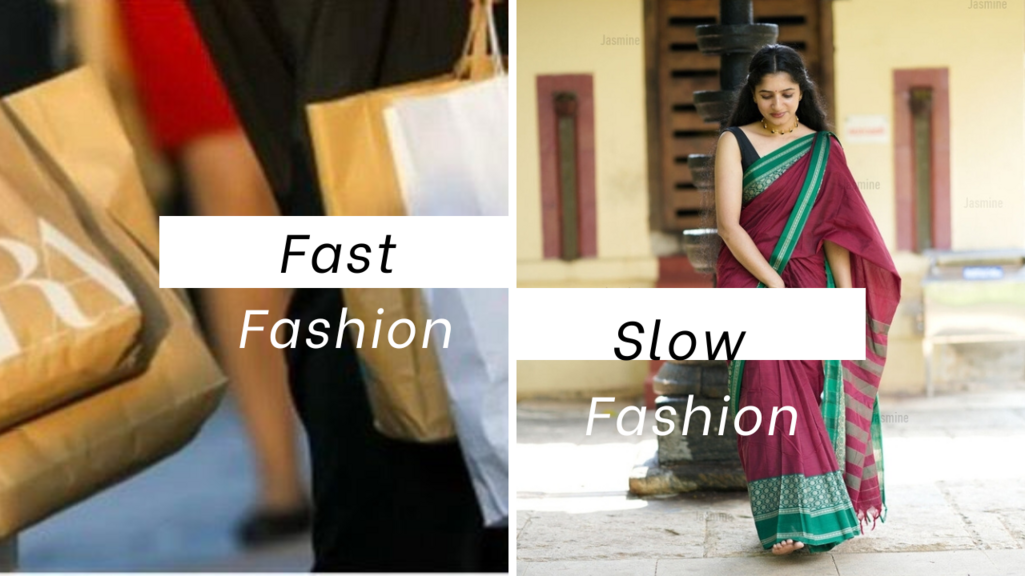
Clothing is not just about style; it tells a story of our values, traditions, and conscious choices. In recent years, the debate between fast fashion and slow fashion has taken centre stage. While fast fashion thrives on speed, trends, and affordability, slow fashion focuses on sustainability, ethics, and timeless style. The difference between the two is not just about clothes but about the kind of future we want to create.
Fast Fashion: Quick Trends, Heavy Costs
Fast fashion is built around mass production, low costs, and instant access to new trends. It allows consumers to buy the latest styles at minimal prices. But behind the glossy storefronts lies a different story:
- Environmental Damage: Synthetic fabrics, toxic dyes, and overproduction contribute massively to water pollution and carbon emissions.
- Short Lifespan: Many fast fashion pieces lose quality after just a few wears, leading to a “wear and throw” culture.
- Ethical Concerns: Low wages, unsafe working conditions, and exploitative practices are often part of the supply chain.
Fast fashion makes clothing disposable — but the consequences are long-lasting.
Slow Fashion: Quality, Consciousness, and Care
Slow fashion is not just a trend — it’s a mindful movement. It values clothing as something to be cherished, not discarded. The philosophy centers around fewer, better, and ethically made pieces.
- Durability & Timelessness: Clothes are designed to last, with timeless styles that go beyond seasonal fads.
- Eco-Friendly Materials: Fabrics like organic cotton, linen, and handwoven textiles reduce environmental harm.
- Artisan Empowerment: Many slow fashion brands support local artisans, paying fair wages and preserving cultural heritage.
- Mindful Consumption: Instead of buying 10 pieces that wear out quickly, slow fashion encourages investing in 1 or 2 quality garments that stay beautiful for years.
Slow fashion respects not only the planet but also the people behind every thread.
Why Slow Fashion Outshines Fast Fashion
- Sustainability: By reducing waste and pollution, slow fashion is kinder to the environment.
- Authenticity: Each garment carries a story — of artisans, traditions, and craftsmanship.
- Value for Money: Quality clothes last longer, offering better value over time.
- Empowerment: Choosing slow fashion supports artisans, local communities, and ethical practices.
Slow fashion is more than a wardrobe choice — it’s a lifestyle decision that aligns with conscious living.
How You Can Support Slow Fashion
- Buy less, but choose better.
- Invest in timeless pieces instead of short-lived trends.
- Support brands that are transparent and artisan-led.
- Care for your clothes — repair, reuse, and restyle.
- Spread awareness about the value of sustainable fashion, especially among the younger generation, who are our tomorrow and can carry this legacy forward.
Conclusion
Ultimately, the decision between fast fashion and slow fashion is a choice between immediate gratification and lasting impact. While fast fashion feeds short-lived trends, slow fashion sustains tradition, empowers artisans, and protects the planet. Every handcrafted piece you choose directly supports the livelihood of artisans, keeps age-old skills alive, and reduces the burden on the environment. By embracing slow fashion, you’re not just building a wardrobe — you’re investing in people, preserving culture, and creating a truly sustainable future.


Add comment